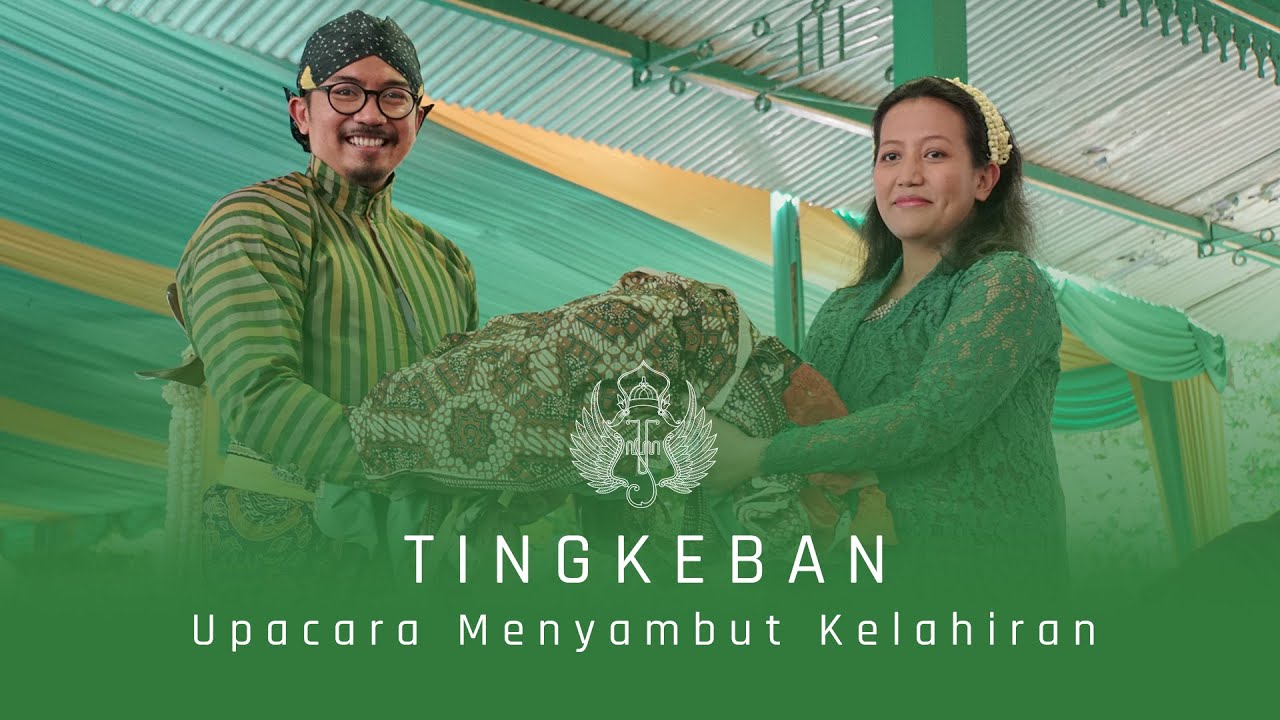UPACARA ADAT JAWA || PANGGIH MANTEN|| MATERI PEMBELAJARAN
Summary
TLDRThis video script offers a deep dive into Javanese life cycle ceremonies, exploring traditional customs and rituals tied to birth, marriage, and death. It covers the significance of key rites such as *mitoni* (pregnancy ceremony), *siraman* (cleansing ritual), *brokohan* (birth ritual), *ijab qobul* (marriage vows), and *krobongan* (funeral rites). The script emphasizes the spiritual and cultural meanings behind these practices, which are meant to honor the gods, ancestors, and community. The rich traditions are highlighted with examples, showcasing how Javanese people celebrate life’s major milestones through meaningful rituals.
Takeaways
- 😀 Javanese traditional ceremonies are deeply rooted in gratitude towards God and are performed to honor cultural customs.
- 😀 There are two main types of traditional ceremonies in Javanese culture: those based on location and those based on the stages of human life.
- 😀 Ceremonies based on location are influenced by geography, such as the 'sedekah laut' (sea offerings) which are performed by coastal communities.
- 😀 'Sedekah laut' involves offering sacrifices to the sea to express gratitude for the resources it provides.
- 😀 Javanese rituals also reflect human life stages, including birth, adulthood, marriage, and death.
- 😀 Birth-related ceremonies, such as 'mitoni' or 'tingkeban,' are performed during the pregnancy, symbolizing protection for the unborn child.
- 😀 Upon a child's birth, ceremonies like 'brokohan' (rituals involving washing the baby) and 'mendem ari-ari' (burying the umbilical cord) are conducted.
- 😀 Marriage ceremonies in Javanese culture are rich with traditions, such as 'siraman' (bathing ceremony) and 'midodareni' (the night before the wedding).
- 😀 The marriage process also includes the exchange of vows, known as 'ijab qobul,' which is important in both Javanese and Islamic traditions.
- 😀 Death-related ceremonies in Javanese culture include 'ngesur tanah' (earth covering) and other rites to honor the deceased, showing respect for ancestral traditions.
Q & A
What is the purpose of traditional Javanese ceremonies mentioned in the script?
-The purpose of traditional Javanese ceremonies is to express gratitude to God and to preserve cultural traditions passed down through generations. These ceremonies also serve as a means of connecting with the community and reinforcing social bonds.
What are some examples of Javanese traditional ceremonies discussed in the script?
-Examples of Javanese traditional ceremonies discussed include the 'Sedekah Laut' (sea offerings), 'Sekaten' (a royal celebration), and various rites of passage such as birth, marriage, and death ceremonies.
How do Javanese ceremonies differ based on location?
-Javanese ceremonies can vary depending on the location. For instance, coastal communities may perform 'Sedekah Laut,' a ceremony to give thanks for the sea's resources, while mountain communities may have different forms of thanksgiving rituals.
What does 'Sedekah Laut' represent, and where is it typically performed?
-'Sedekah Laut' is a ceremony to offer thanks to the sea for its resources. It is typically performed in coastal areas, such as the northern coast of Java, where offerings are thrown into the sea.
What is the significance of the 'Sekaten' ceremony in Javanese culture?
-The 'Sekaten' ceremony commemorates the birthday of the Prophet Muhammad and is held in the palace of Yogyakarta. It includes offerings and celebrations to honor the Prophet and is a symbol of the blending of Islamic and Javanese cultural practices.
What are the steps involved in the traditional Javanese marriage ceremony?
-The traditional Javanese marriage ceremony includes several stages, such as the 'Lamaran' (engagement), 'Siraman' (ritual bath), and 'Ijab Qobul' (marriage vows), followed by the 'Midodareni' (night before marriage) and 'Panggih' (the wedding meeting).
What is the meaning of the 'Midodareni' ceremony?
-The 'Midodareni' ceremony takes place the night before the wedding. It is a symbolic ritual where the bride is spiritually prepared for marriage, and her family offers prayers and blessings for her future.
What is the purpose of the 'Mendem Ari-Ari' ceremony?
-The 'Mendem Ari-Ari' ceremony is performed after the birth of a child, where the placenta (Ari-Ari) is buried, signifying a connection to the earth and a ritual for the well-being of the newborn.
What are the traditional practices surrounding death in Javanese culture?
-In Javanese culture, after a person dies, several ceremonies are held, including the 'Ngaben' (funeral) and 'Panguburan' (burial). These rituals aim to honor the deceased and ensure their peaceful transition to the afterlife.
How do Javanese people view the concept of life stages, and how is it reflected in their ceremonies?
-Javanese people view life in stages, from birth to death, and each stage is marked by specific ceremonies. These stages include pregnancy ('Mitoni'), birth ('Brokohan'), adulthood ('Manten'), and death, with rituals for each stage that reflect gratitude and respect for the natural order of life.
Outlines

このセクションは有料ユーザー限定です。 アクセスするには、アップグレードをお願いします。
今すぐアップグレードMindmap

このセクションは有料ユーザー限定です。 アクセスするには、アップグレードをお願いします。
今すぐアップグレードKeywords

このセクションは有料ユーザー限定です。 アクセスするには、アップグレードをお願いします。
今すぐアップグレードHighlights

このセクションは有料ユーザー限定です。 アクセスするには、アップグレードをお願いします。
今すぐアップグレードTranscripts

このセクションは有料ユーザー限定です。 アクセスするには、アップグレードをお願いします。
今すぐアップグレード関連動画をさらに表示

BAHAN AJAR BAHASA SUNDA KELAS XII - BAHASAN TRADISI SUNDA

How Different were Early Filipino Traditions? | ATIN: Stories from the Collection

Weton: Ramalan, Realita, atau Sekedar Tradisi?

The Rites of Passage - Arnold Van Gennep

Berikut ini Macam-Macam Upacara Adat di Indonesia - Fakta Menarik

Tingkeban: Upacara Menyambut Kelahiran
5.0 / 5 (0 votes)
